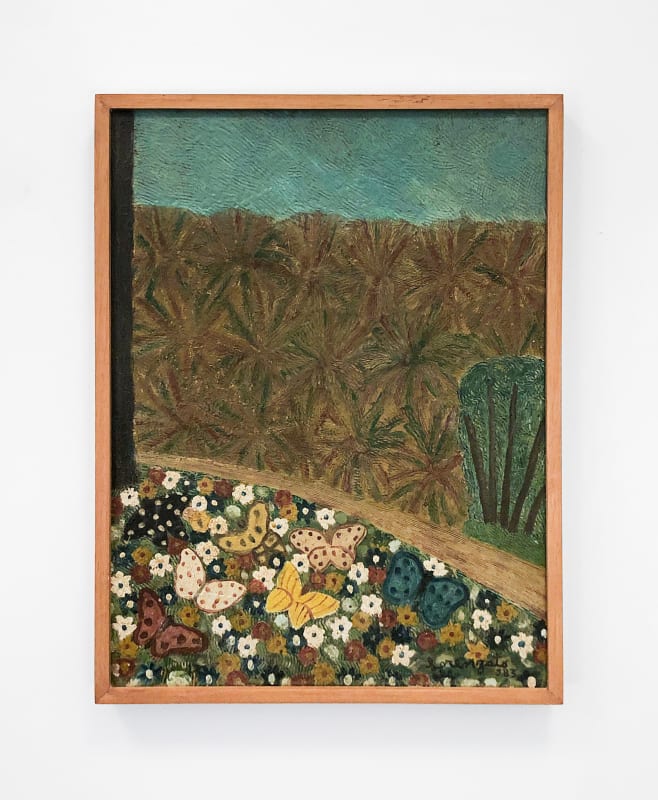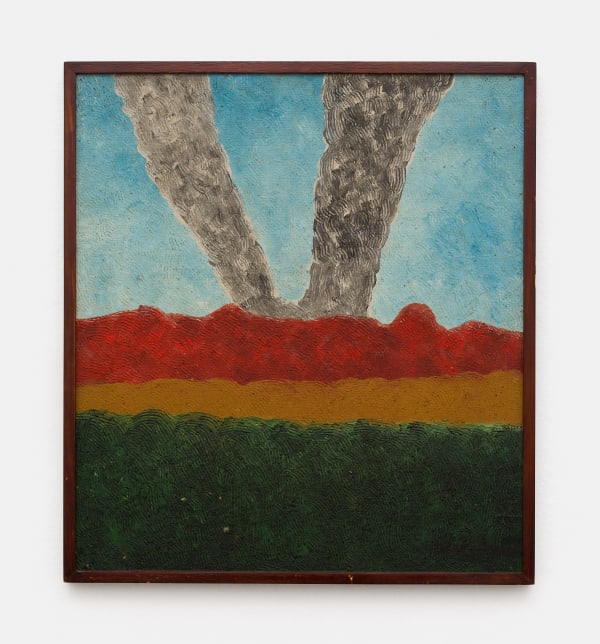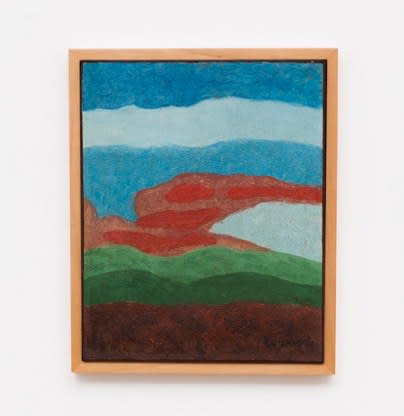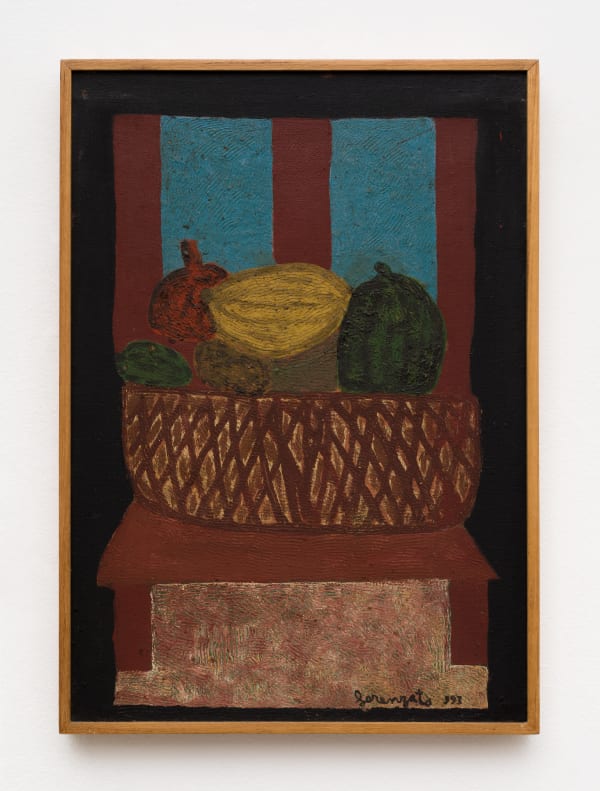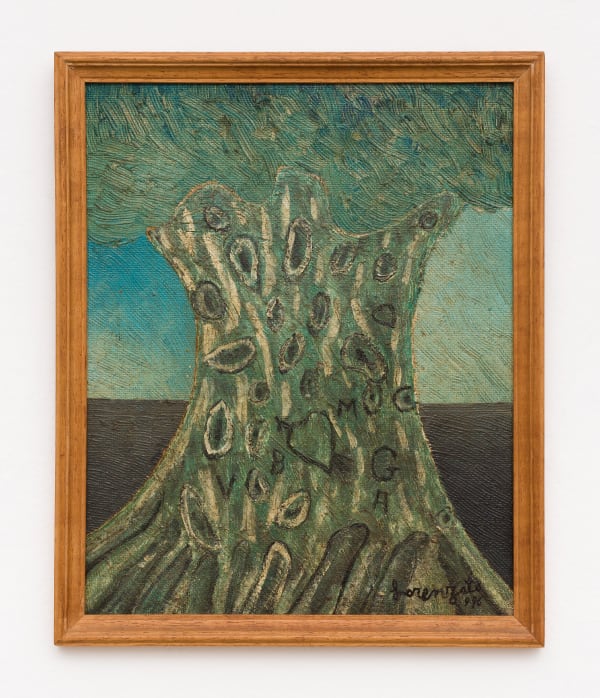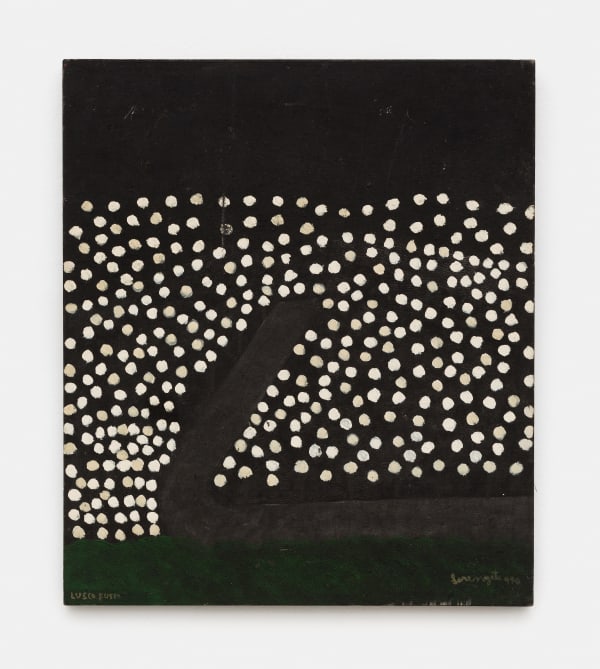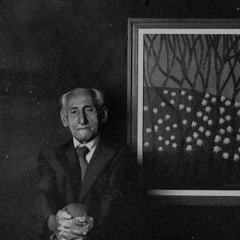Lorenzato Amadeo Luciano Lorenzato
Amadeo Luciano Lorenzato, autodidact painter and straight shooter. He does not have schooling. He does not follow tendencies. He does not belong to churches. He paints as it comes. Amen. – Amadeo Luciano Lorenzato, 1946
Jan 23 - Feb 16, 2019
Mendes Wood DM, New York is pleased to present an exhibition of works by the seminal Brazilian painter Amadeo Luciano Lorenzato (1900–1995). Comprised of paintings made between 1973 and 1993, this exhibition marks his first solo presentation in the United States. Drawn to the natural world and symbols of daily life, Lorenzato depicted landscapes, still lives, and scenes from his neighborhood. His aim was not to reproduce his environment, but to translate it through a simplified vision of reduced geometric forms utilizing rich handmade pigments and defined brush strokes.
Born in 1900 in Belo Horizonte, Brazil to Italian immigrants, Lorenzato’s experience was that of displacement. At age 20, he and his family relocated back to Italy where he worked various construction jobs and restored frescoes, as well as extensively traveling throughout Europe. It was during his travels that he immersed himself in making work, painting small gouaches that he would sell in order to sustain himself, and was exposed to museums and the works of Matisse and Picasso. In 1948, Lorenzato returned to Brazil and continued to work in civil construction and as a mural painter. Eight years later he sustained a severe leg injury which consequently at the age of 56 allowed him to dedicate himself exclusively to painting until his death in 1995.
Through his work in civil construction, Lorenzato gained an intimate understanding of materials and often made his own canvases utilizing wire, cement plates, or cardboard. He also implemented techniques and tools from his time as a mural painter, utilizing combs, brushes and forks which he referred to as pincel-pente, or comb-brushes. These crude but expressive tools allowed him to achieve the deeply grooved and less incisive brushwork of his frenzied surfaces.
Although Lorenzato worked in isolation for most of his life, he painted in the Minas Gerais tradition as established by the celebrated mid 20th century Brazilian painter Alberto da Veiga Guignard. Like Lorenzato, Guignard’s preferred theme of choice was the landscape, hazy and suspended in gravity while Lorenzato’s world rested between elasticity and constructivism.
Largely a self-taught artist, Lorenzato considered painting an everyday activity, a natural extension of himself, and “a form of spiritual survival.” A vital part of his creative process was going on long walks around his home and in the countryside, making drawings and sketches that he would later translate to paintings from memory. He filtered, abstracted, and transferred these memories to canvas, organically mixing pictorial and thematic elements into his works. In Sol e Céu Vermelho [Red Sun and Sky], 1980, a red sun sets behind a wooded mountain range, surrounded by oblong red clouds. The heat of the sun radiates to the surrounding sky, and the greens of the forest are deep and immersive. The trees and sky have a similar scratched quality, creating convulsive movement through their simple pulsing, texturized gesture.
Lorenzato’s paintings do not translate the real—clouds are merely not clouds, and shadows are not merely shadows—rather they are nuanced possibilities of appearances and inhabit an illusionary world. Through his painting, Lorenzato developed a pure and powerful private language that offered a critical view of the reality that surrounded him.
-
 Amadeo Luciano Lorenzato, Untitled, 1983
Amadeo Luciano Lorenzato, Untitled, 1983 -
 Amadeo Luciano Lorenzato, Untitled, 1987
Amadeo Luciano Lorenzato, Untitled, 1987 -
 Amadeo Luciano Lorenzato, Untitled, n.d.
Amadeo Luciano Lorenzato, Untitled, n.d. -
 Amadeo Luciano Lorenzato, Untitled, 1978
Amadeo Luciano Lorenzato, Untitled, 1978 -
 Amadeo Luciano Lorenzato, Untitled, 1993
Amadeo Luciano Lorenzato, Untitled, 1993 -
 Amadeo Luciano Lorenzato, Untitled, 1993
Amadeo Luciano Lorenzato, Untitled, 1993 -
 Amadeo Luciano Lorenzato, Nuvem de Gafanhotos (Cloud of Crickets), n.d.
Amadeo Luciano Lorenzato, Nuvem de Gafanhotos (Cloud of Crickets), n.d. -
 Amadeo Luciano Lorenzato, Sol e Céu Vermelho, 1980
Amadeo Luciano Lorenzato, Sol e Céu Vermelho, 1980 -
 Amadeo Luciano Lorenzato, Untitled, 1976
Amadeo Luciano Lorenzato, Untitled, 1976 -
 Amadeo Luciano Lorenzato, Untitled, n.d.
Amadeo Luciano Lorenzato, Untitled, n.d. -
 Amadeo Luciano Lorenzato, Sol atrás do Bosque, 1982
Amadeo Luciano Lorenzato, Sol atrás do Bosque, 1982 -
 Amadeo Luciano Lorenzato, Lusco Fusco, 1990
Amadeo Luciano Lorenzato, Lusco Fusco, 1990 -
 Amadeo Luciano Lorenzato, Untitled, 1977
Amadeo Luciano Lorenzato, Untitled, 1977
